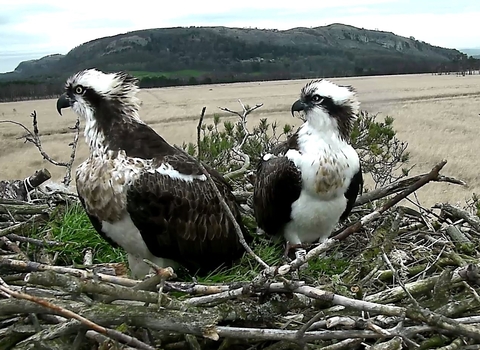This summer hasn’t been very kind to our osprey family. The nest has been soaked with endless rain and has frequently been battered by storm force winds. However, our ospreys have managed to thrive; White YW has brought in plenty of fish and Blue 35 has kept the young birds dry and safe.
The young are hunkered down on a stormy day. Mum skilfully flies in to remove a piece of bark precariously flapping in the wind. If you blinked you would have missed it.







Comments